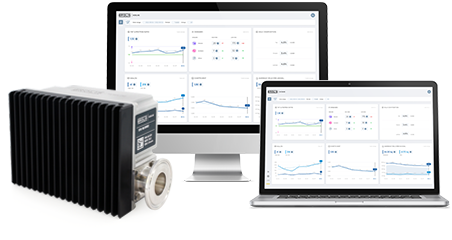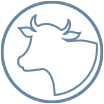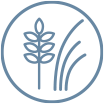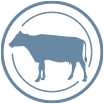Diagnostic value of milk fat
It is very important to monitor and observe the trends of fat variation in milk and the relationship with other components. The ratio of milk fats to proteins can be a sufficiently reliable indicator in the diagnosis of acidosis or ketosis.
Determination of subclinical ketosis
As the ratio of milk fats to proteins approaches the threshold of 1.5, we can suspect subclinical ketosis in cattle. In such a case, the changes are associated with an energy deficit in the body due to the physiological state of cattle (e.g. after calving) or an improperly balanced diet.
The amount of fat is not constant during milking either. At the beginning of milking, the amount of fat in milk is about 1 percent, rising to 8 or even 12 percent in the last spurts of milk. Therefore, constant monitoring of milk fat can be important not only in the assessment of the health status of the animal, but also as an indicator of the proper performance of the milking process.
| Fat-protein ratio in suspected ketosis | |
|---|---|
| >1,4 | There is a high probability that a cow has subclinical ketosis, the risk of clinical ketosis increases |
| 1,3-1,4 | Increased risk of subclinical ketosis |
| 1,2 | Optimal ratio of fats and proteins |
Determination of subacute acidosis (SARA)
| Fat-protein ratio in suspicion of acidosis | |
|---|---|
| 1,2 | Optimal ratio of fats and proteins |
| 1,0-1,1 | Increased risk of subacute acidosis (SARA) |
| <1,0 | The cow is more likely to have subacute ruminal acidosis (SARA), the risk of clinical acidosis is increased |
The optimal ratio of milk fat to protein in the milk of dairy cattle should be ~1.2. When it reaches the limit of <1.0, it can be said that cattle have subacute acidosis. In such a case, the cause of the disease should be identified and eliminated as soon as possible. This can happen due to an excessive amount of grain in the diet or an excessive amount of concentrated feed given during a single feeding. Insufficient digestible fibre feed chopped too finely or feed raw materials contaminated with mycotoxins can also cause acidosis.
Methods for determination of fat in milk
It is very important to understand and monitor the trends in fat in milk and the relationship with other components (e.g. protein, lactose). To date, fat is usually determined by sending control milk samples to the laboratory, but with the development of technology, it is possible to integrate sensors in milk lines that would continuously measure the amount of fat in milk.
Röse-Gottlieb method
Reference study for determination of fat content in milk. The essence is the separation of fat from the test sample by treating it with concentrated sulfuric acid, isoamyl alcohol and centrifugal force. The method is reliable and accurate, but can only be performed in laboratories, as qualified personnel must use special equipment and reagents. Also, this test takes a relatively long time, so it impractical for use in milk processing plants or farms.
Laboratory spectroscopic tests
Fats are more accurately determined by infrared analysis of their absorption and emission spectra. This methodology is very popular all over the world and is used in many laboratories to analyse the constituents of milk. Most often, such equipment is adapted for laboratory use, is quite expensive and requires qualified specialists. However, with the development of technology, there are opportunities to make this type of methods more practical and adapted for use not only in laboratories, but also on farms.
BROLIS HerdLine milk analyzer
The in-line milk analyzer BROLIS HerdLine is like a small laboratory on your dairy farm. The analyzer examines the composition of each cow’s milk during each milking. This “mini-spectroscope” is installed in the milking stalls or milking robot in the milk line and does not require additional reagents and special maintenance.
The analysis of fat, protein and lactose provides a proper evaluation of the health, productivity and economic efficiency of dairy cattle. The data collected during milking is processed in real time and can be viewed using the BROLIS HerdLine application.
What affects milk fat?
Milk fat is one of the most valuable and variable components of milk. They consist of saturated (~60%) and unsaturated (~40%) fatty acids. More than 400 of them have been identified, but the main part of fat (~90%) consists of 15-20 different fatty acids. It also contains vitamins A, D, E, K.
The proportion and composition of fat may vary depending on the time of year and the composition of the feed. They are influenced by many factors in milk: genetics, lactation period, feed quality, environmental conditions, milking process, animal health status, etc.






